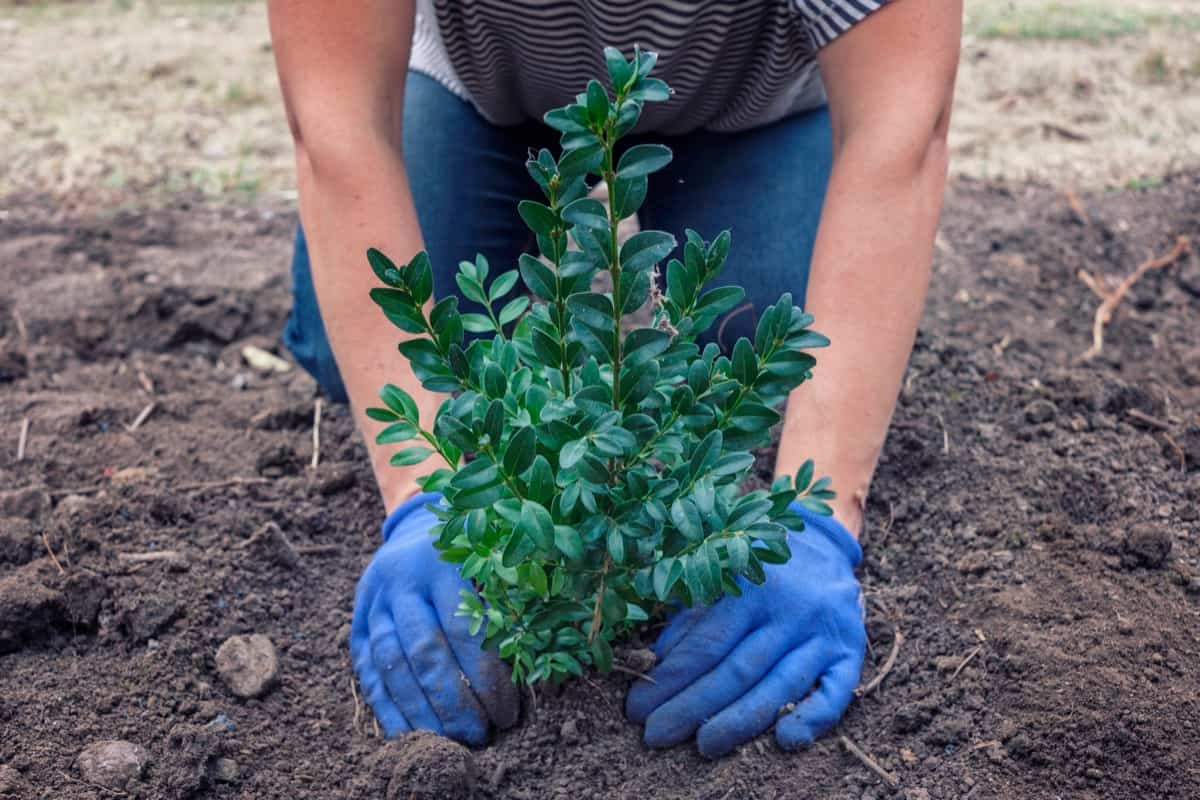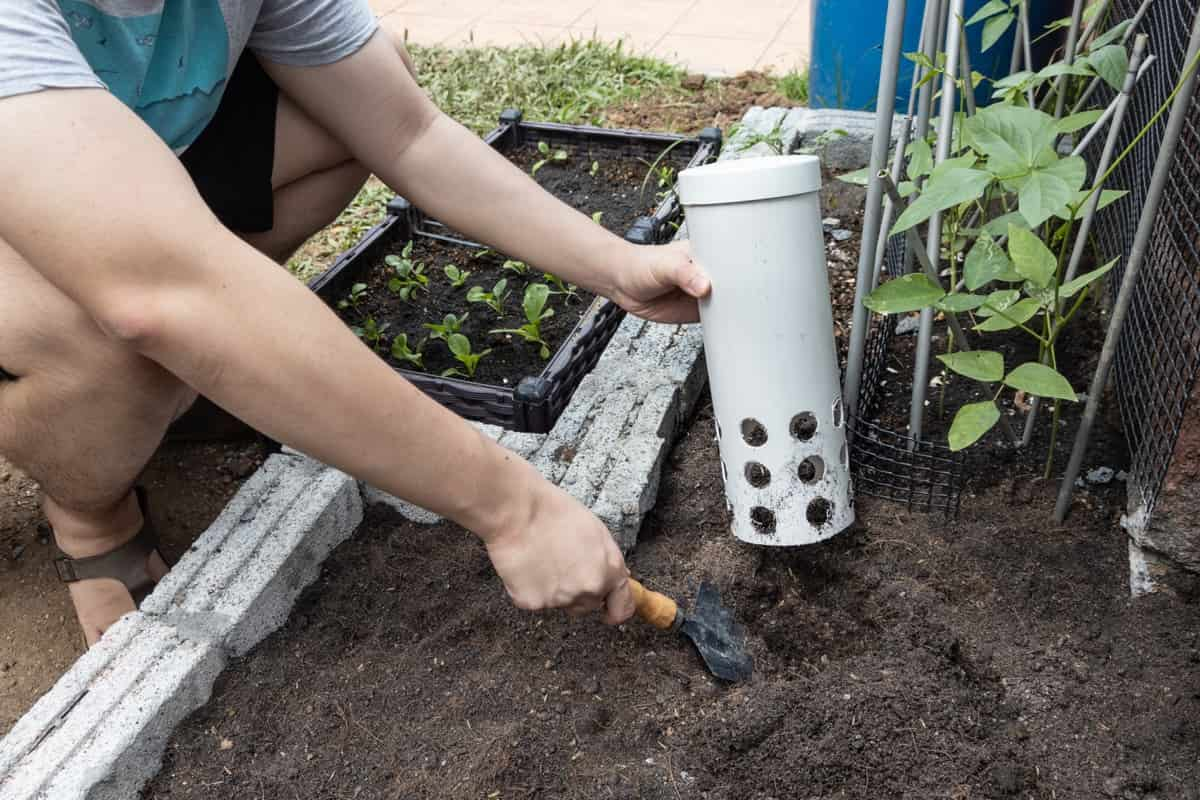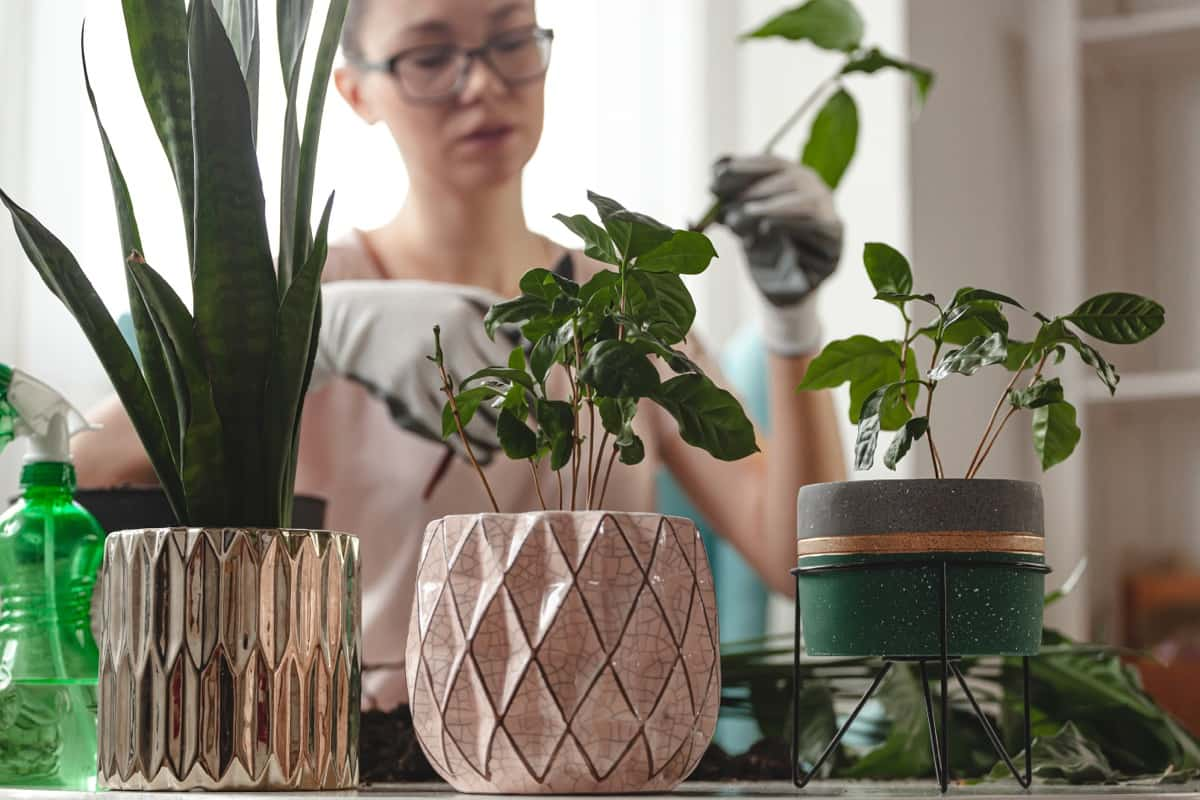Hardened spikes containing compressed amounts of nutrients and some other ingredients are known as fertilizer spikes. It depends on the spike’s brand and formulation, whether it contains entirely organic ingredients or a combination of organic and inorganic ingredients. Different fertilizer spikes exist for different types of trees, with pre-mixed amounts and compositions of nutrients.

Pre-mixed spikes can prevent over-fertilization when you select the ones best suited to your trees and environment so long as they are formulated to avoid over-fertilization. Various plants benefit from fertilizer spikes, including established trees, shrubs, fruit-bearing trees, and indoor plants. Because they are ready for use straight from the packet, you don’t need to worry about mixing fertilizer or hauling heavy bags.
How Fertilizer Spikes Work
Spikes provide nutrients for several months. In spikes, nutrients are released when moisture touches the spike, triggering bacterial and fungal activity. It is ideal for delivering nutrients to plants slowly by releasing them over time. Although plant spikes release slowly and gently, an excess can potentially burn roots, so they should be kept away from the root zone. You should read the manufacturer’s directions carefully and follow them before using any chemical formulation.
Using Fertilizer Spikes for Trees
Your trees need spikes to get the nutrition they need. Their nutrient composition is in a three-number format on their spike packaging. Choose the spike corresponding to your tree type and the amount of nitrogen(N), phosphorus(P), and potassium(K) it requires after testing your soil. The need for fertilizer decreases as trees mature, but spring fertilization aids in the fight against infection. In contrast, fall fertilization helps the soil regain the nutrition it lost over the summer.
Too much nitrogen can burn the young tree’s roots if fertilized too frequently. Don’t fertilize immature trees until they are at least one or two years old. Dead branches, discolored leaves, sparse leaf development, and short twigs are all signs that the tree needs fertilization. Tree spikes are best used when fertilization is needed at the peak of a tree’s growth. Cut them back once the tree is mature to maintain its growth spurt.
To determine how many fertilizer spikes to use per tree, first measure the diameter of its trunk with a caliper. At least one spike is required for every two inches of its diameter. Three fertilizer spikes will be required for a measurement of six inches. It’s important to space the products three feet apart and place them under the tree’s drip line. Keep them away from the trunk to avoid harming the tree. You might want to skip spiking any newly planted trees.
Fertilizing Shrubs with Spikes
Plants produce their food through their leaves, not through fertilizer. It is not necessary to use fertilizer spikes on shrubs that are healthy. Your shrubs will grow into healthy specimens with the spikes supplementing deficient soil. The spike adds nutrients only to the soil immediately surrounding it, whereas bagged fertilizer can be spread around the shrub’s base. Fertilization is not necessary for adult shrubs.
Taping the spikes around the shrub’s base when the soil is moist is recommended. Place the cap over the top before inserting the spike into the soil. Once the spike has been inserted, remove the cap. It is important to use a spike that is formulated for a particular type of shrub. The fertilizer spike should be placed below the drip line.
In case you missed it: 10-10-10 Fertilizer: How to Use in Your Home Garden

Using Fertilizer Spikes for Indoor Plants
Fertilizer spikes are an easy way to maintain indoor plants without having to remember when to fertilize them. Indoor plant spikes contain a higher phosphorus content, usually 6-12-6, which makes them ideal for flowering plants. If your plant is larger, you may need several spikes; if it is smaller, you may only need two or three.
Under the drip line, create holes around the plant’s base, but not too close to it. Cover the spikes with soil and water after tapping them into the soil. Providing continuous nutrition may require replacing them monthly. The only time indoor plants need fertilizer is when they are actively growing. Salt buildup and root damage can be caused by too much fertilizer. Plants that grow in dry climates, such as cacti and succulents, do not need spikes.
Advantages of Using Fertilizer Spikes
- The spikes dissolve gradually over a relatively long period and release nutrients into the soil in controlled amounts. It reduces fertilizer application frequency and eliminates root shock and leaf burn.
- Overfertilizing trees, shrubs, and other plants is impossible because the content is premeasured.
- Due to its encasement and staked position, this product is safe for children and pets. Additionally, it eliminates conventional fertilizer runoff odors.
- Unlike granular or liquid fertilizers, spikes are convenient, quick, and easy to handle, store, and apply.
- Pre-mixed formulas are available for specific plant types, such as trees, ornamental plants, vegetable gardens, and flowerbeds.
- The plants are characterized by a special feature that enhances and promotes their resistance to disease and infestation.
Disadvantages of Using Fertilizer Spikes
- When you hammer a spike into the ground, the spike may shatter. Using a wooden stake is a good way to avoid this. With this new spike, the spike can easily be inserted into the ground without breaking.
- Avoid placing the spikes close to the tree trunk. Trees can be weakened and even killed by too much fertilizer. The spikes should be placed at the drip line.
- The price of spikes per tree is slightly higher than that of granular or liquid fertilizer.
- The movement of fertilizer sideways in the soil is limited. Consequently, the root system can focus more on its root growth near the spike than at other points in the root zone because the spikes only distribute nutrients to a small area of the root zone.
In case you missed it: How to Build a Budget-Friendly Raised Bed Garden

Conclusion
Providing your garden and landscaping projects with the proper nutrition is essential. Knowing how much quantity and when to feed your trees and plants can be challenging- and messy. You can easily ensure the health and beauty of everything you grow with fertilizer spikes by removing the mess and guesswork from plant nutrition.
- Feed Your Flock for Less: Top 10 Tips to Save on Chicken Feed
- Ultimate Guide to Ossabaw Island Hog: Breeding, Raising, Diet, and Care
- Hatching Answers: The Top 10 Reasons Your Chickens Aren’t Laying Eggs
- Eggs and Economics: Breaking Down the Cost of Raising Backyard Chickens
- Defend Your Greens: Proven Methods to Keep Iguanas Out of Your Garden
- Ultimate Guide to Cinnamon Queen Chicken: A Comprehensive Guide for Beginners
- Ultimate Guide to California Tan Chicken: Breeding, Raising, Diet, Egg-Production and Care
- Ultimate Guide to Marsh Daisy Chicken: Breeding, Raising, Diet, and Care
- 10 Types of Chicken Farming Businesses You Can Start for Profits